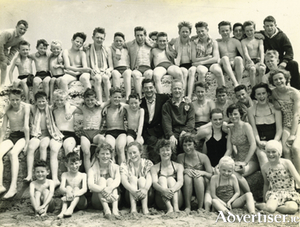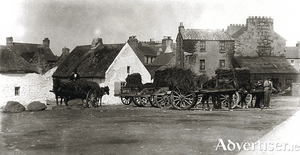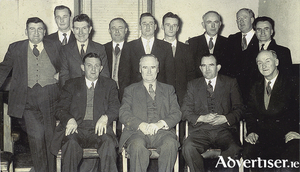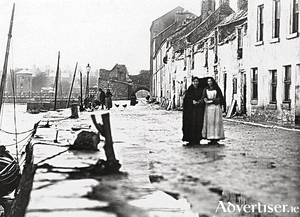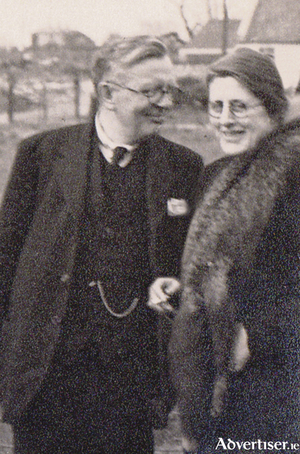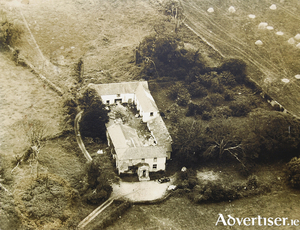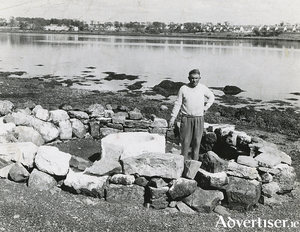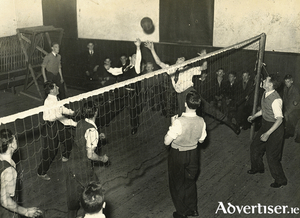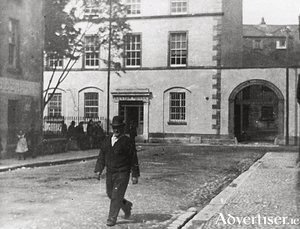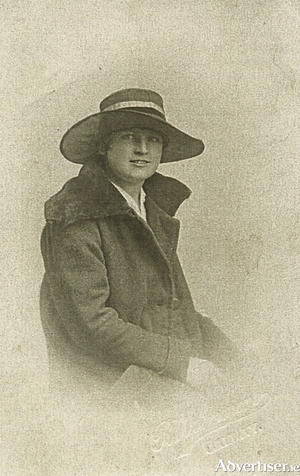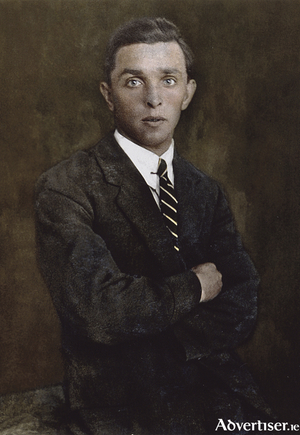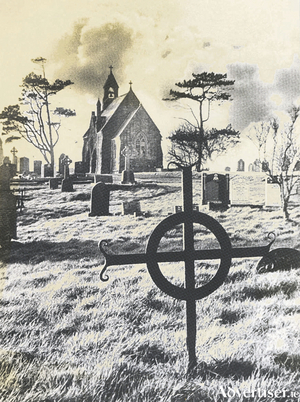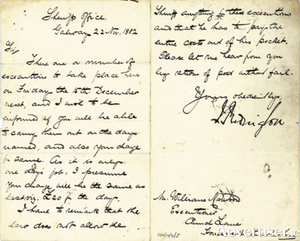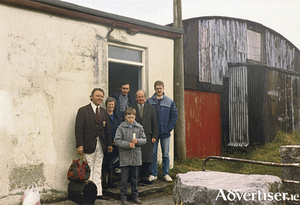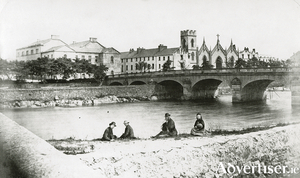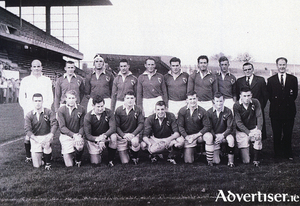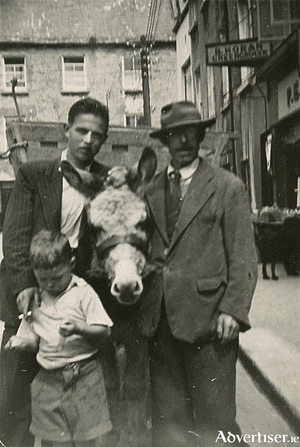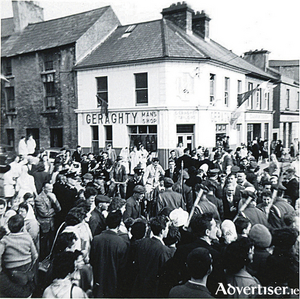The evils of mixed bathing
Mon, Aug 15, 2016
In 1925 there was a major debate in the Urban Council about a Garda report that two men from County Offaly who had been swimming in the sea in Salthill without any bathing costumes had been apprehended, and how the gardaí should deal with them. The debate was about the evils or otherwise of mixed bathing in Salthill.
Read more ...The turf market at the Claddagh
Wed, Aug 03, 2016
This photograph of the turf market at the Claddagh, near Wolfe Tone Bridge, was taken by the journalist Lillian Bland in 1908. This market used to take place regularly as farmers, mostly from the Barna/Furbo area, sometimes even Spiddal, would bring their cartloads of beautifully stacked turf to town. They were hoping to barter or sell their produce and then do their shopping in town. They often carried loads of hay, sometimes loose, sometimes tied, and large cans of milk, also for sale. There was a weighbridge on the other side of the cottages in our photograph which was often used in these transactions.
Read more ...A brief history of Galway trams and buses
Thu, Jul 28, 2016
An entrepreneur named Mr Berry was probably one of the first people to organise buses in Galway. He had over a dozen horse drawn vehicles that plied regularly between Eyre Square and the Eglinton Hotel. The fare was one penny. Each vehicle was marked to carry a certain number of people and the police were vigilant to see that there was no overloading. In 1868 he bought a new bus that was allowed to carry inside and outside passengers. This could travel on longer excursions, to Barna and Oughterard, etc, but an accident on Knockbane Hill seriously affected his business.
Read more ...Long Walk, after the rain, 1908
Thu, Jul 21, 2016
The Spanish Arch was originally an extension of the city walls from Martin’s Tower to the banks of the river. It was built in 1584 as a measure to protect the city’s quays. It was known as Ceann an Bhalla or ‘The Head of the Wall’. In the 18th century, Long Walk was built by the Eyre family as an extension to the quays, and a breakwater to construct a mud berth. A number of arches were constructed to allow access from the town to the new quay but some of these were wrecked by a tsunami which occurred after the 1755 earthquake in Lisbon.
Read more ...Geraldine Plunkett and Tom Dillon
Thu, Jul 14, 2016
Geraldine Plunkett was a daughter of Count George Noble Plunkett and a sister of Joseph Mary Plunkett. She became Joe’s aide-de-camp and knew all the 1916 leaders. She and Joe lived in Larkfield cottage in Kimmage where they stored guns and ammunition, and a lot of drilling, etc, occurred. Joe brought in Michael Collins to help her with the family accounts.
Read more ...Dangan House
Thu, Jul 07, 2016
Dangan House, “beautifully situated on the banks of the fine river Corrib” directly opposite Menlo Castle, was built in 1684 as the seat of the Martin family. ‘Humanity Dick’ Martin was brought up there. John Redington purchased Dangan Demesne from Anthony Martin about 1830 and became the proprietor of the townland. It was, for a short time afterwards, converted into an Ursuline Convent. The nuns were there from 1839 to 1844. Dangan House was left to the Board of Guardians of the Galway Union for an auxiliary workhouse until 1854. The only trace of the original Martin building today is the tea-house folly which is on the banks of the river. A nearby property known as Dangan Cottage was leased by a number of American artists in the 1870s but was described as a ruin in the 1890s.
Read more ...‘Too late now to retrieve a fallen dream..’
Thu, Jul 07, 2016
Apart from Irish nationalists believing that Home Rule would follow the war if they fought for Britain; or the Ulsterman's belief that after their sacrifice, Britain 'would see them right,' there were other reasons too, that drove young men into the British army at this perilous time in history. Men joined for heroic reasons. There were propaganda warnings that Irish women would be raped, land and farms confiscated, churches burnt and looted if Germany invaded Ireland as it had Belgium.
Many joined because they were poor. Army pay was relatively good, there was accommodation, a certain status, and a pension whether you returned or failed to do so!
Read more ...St Augustine’s Well
Thu, Jun 30, 2016
James Hardiman, in his history of Galway, lists seven holy wells in Galway, St Bride’s in the eastern suburbs; St Anne’s towards the west of the town near the strand (on Whitestrand Avenue); another further along the shore (St Enda’s Barna?); St Bridget’s at the bottom of Red Earl’s Lane on Flood Street; St John the Baptist’s on Lough Athalia; one dedicated to the Blessed Virgin on Lough Athalia; and one dedicated to St Augustine on Lough Athalia. The last three were all above the high water mark, and on his 1818 map, Logan attributes all three to St Augustine. O’Donovan’s Ordnance Survey Letters refers to a stone with a cross cut out on each of these three wells.
Read more ...THE BOYS CLUB
Thu, Jun 23, 2016
“Our Lady’s Boys Club has taught me three things. First it has taught me a better knowledge of my Religion and its principles; secondly it has taught me to seek to improve myself, and thirdly it has taught me that real happiness is to be found in helping others rather than in seeking self.” These words, spoken in 1960 by a young man who had grown up in the club and was by then a member of its committee, summed up beautifully the work the club has tried to accomplish since its foundation in 1941.
Read more ...The Custom House
Thu, Jun 09, 2016
In 1232 AD, the Anglo-Norman De Burgos came to Galway where they ruled for a period of time. They built a castle and defensive fortifications including the old city walls and a medieval hall, the Great Hall of the Red Earl, Richard De Burgo. The street we now know as Flood Street was originally named Earl Street or Sráid Tobar an Iarlaigh, and the lane beside it was known as Red Earl’s Lane or Boaher an Iarlaigh.
Read more ...‘No time for fainting’
Thu, Jun 09, 2016
‘The small girl smiles. One eyelid flickers. She whips a pistol from her knickers. She aims it at the creature’s head. And bang bang bang, she shoots him dead.’
Read more ...He went to jail to save his father
Thu, Jun 02, 2016
Hubert Reynolds was born in St Patrick’s Avenue in 1902 and shortly afterwards his family moved to Queen Street. He followed a family tradition when entering the service of the Railway Company as a 15-year-old in 1917. He was a boy porter and earned 10 shillings for a 60 hour week. From his boyhood, he took an active part in the National Movement and joined Fianna Éireann. During the War of Independence, he was engaged on communications work.
Read more ...The ‘New’ Cemetery
Thu, May 26, 2016
In the second half of the 19th century, the overcrowded condition of the graveyards of Galway was an issue which faced the Town Commissioners. At a meeting in mid-April 1873, one person mentioned that in the previous 30 years, almost two and a half thousand burials had taken place in the little cemetery in The Claddagh, largely as a result of the Famine and its aftermath.
Read more ...A letter from the sheriff
Thu, May 19, 2016
On the night of August 18, 1882, five members of one family, John Joyce, his wife Brighid, his mother Mairéad, his daughter Peigí, and his son Micheál, were murdered in Maamtrasna on the Galway/Mayo border. The motive for this multiple murder is unclear, but John was suspected of sheep stealing, his mother of being an informer, and his daughter of cavorting with the RIC who would have been the natural enemy of the locals. Two members of the family survived the horrific attack; a nine-year-old boy, Patsy, who was badly injured, and his older brother Máirtín who was working for a family in a neighbouring farm on the night.
Read more ...St Patrick’s Brass Band
Thu, May 12, 2016
One of Galway’s most enduring, most enjoyable, and most enjoyed institutions is the community based musical group, St Patrick’s Brass Band. The band was founded in Forster Street in 1896 and they have been entertaining Galwegians since.
Read more ...Newtownsmith
Thu, May 05, 2016
There is a very interesting map of “St Stephen’s Island” in Mary Naughten’s excellent little history of the Parish of St Francis in Woodquay. It is dated 1785 and shows the beginnings of what would be now known as Newtownsmith. It consisted mostly of small houses, yards, malt houses, and a burial ground. This ‘new town’ was largely built by the governors of the Erasmus Smith estate. In this suburb, a county courthouse was erected between 1812 and 1815, and a town courthouse during 1824. In 1823 it was objected that there were several suitable sites for a new courthouse ‘immediately in the town’ and that it was ’quite idle’ to lay foundations in Newtownsmith, or in any part of the suburb.
Read more ...Connacht Rugby
Thu, Apr 28, 2016
The first team to represent Connacht in rugby played against Leinster on December 8 1885. At that time, the game in the west was played by just a few schools. In the city, it was really only UCG and the Grammar School who played with any regularity. By the beginning of the last century the Jes, the Bish, and St Mary’s were competing. The growth of the game was interrupted by World War I and by the War of Independence, but it improved a lot after the truce.
Read more ...‘Shoots’
Thu, Apr 21, 2016
Many people will remember ‘Shoots’ as one of the most lovable and delightful characters on the streets of Galway. He was a small man with a big moustache, big glasses, and a big personality. His real name was Michael Tuite. He was reared in Artane in Dublin but came to live here at a time when it was mostly cowboy pictures that were shown in our cinemas. Michael was a fan and began to act as if he himself was a cowpoke. Galwegians gradually changed the greeting “Howya Tuite” to “Shoots”, probably with a little help from the man himself.
Read more ...Geraghty’s men’s shop
Thu, Apr 14, 2016
“Good clothes are needed by the men of today and Geraghty & Sons can supply the perfectly tailored suit you need in 4 days. Tailored in our own workshops. Have your clothes made by the men with five generations of Tailoring experience behind them. See our range of suitings, serges and overcoats. 50 shillings, Suit or Overcoat. Customers own materials made up at reduced prices. Special terms for C.M. & T. To the trade. Geraghty & Sons, Lombard St. Galway.”
Read more ...The Collegiate Church
Thu, Apr 07, 2016
The Collegiate Church of St Nicholas of Myra is the largest medieval parish church in Ireland and its history is a kind of microcosm of the history of Galway. The earliest part of the present church dates from the beginning of the 14th century and includes the chancel with its three windows in the south wall. However it is possible that there was an earlier structure on the site. There is a legend that a man from the Aran Islands who died in 1580 aged 220 years could remember a time when the church did not exist but that just sounds a likely story. The records that exist suggest that the church was founded in or about the year 1320.
In 1484, Donatus O’Murray, the Archbishop of Tuam issued letters under his seal which gave the church “Collegiate” jurisdiction by which it was to be governed by the mayor and burghers of the town. This was confirmed by Pope Innocent VIII the following year and so many of the local parishes were granted to the college that its area was as large as a small diocese.
Read more ...